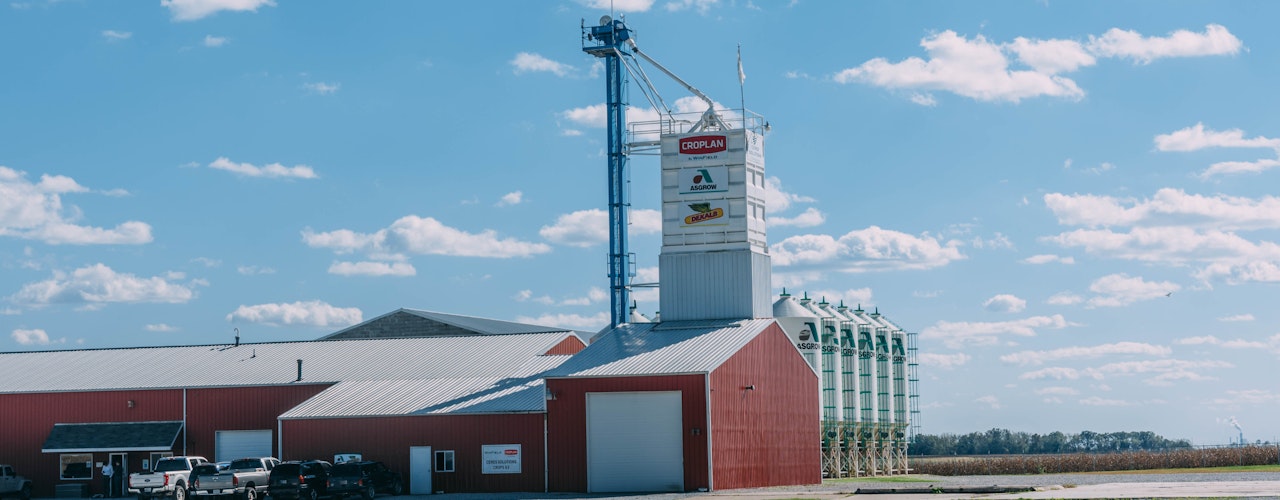As the record low temperatures are starting to ease up a bit, a lot of growers will only have one thing on their mind: planting time is coming closer. Except for Texas, of course, they have been making us envious with ‘plant19’ hashtags on Twitter for a few weeks already. And whether you are planting corn, cotton, beans, tomatoes, or any other crop – planting time is always crucial, as this is where you set your fields up for the season. We all know that if planting fails, in most cases there is no way of making up for it and the season will be a failure.
Planting has always been important but we have seen a renewed focus in recent years with companies like Precision Planting and others pushing growers’ expectations of planting technology ahead and therefore forcing competitors to innovate as well. New planting technologies allow growers to optimize seed spacing, singulation, planting depth, furrow closing pressure and it even provides the option to plant multiple varieties in the same field in order to capitalize on intra-field variability.
Forming the foundation of the season
Where a planting operation forms the foundation of a season that will carry all the way through harvest and therefore deserves optimizing, so will the record-keeping process that starts at the same time you set up for the season ahead. In the same way a record harvest and ROI is the ultimate goal of any growing season, having a complete set of records that can be utilized for both a solid in-season and post-season analysis is the goal of record keeping. So, why do so many growers still not have the ability to perform this type of analysis?
Some parts of the record-keeping process are mandatory; keeping spray records for example. Other parts of the growing season do not necessarily need to be recorded and can fall by the wayside. I often get asked by growers how they can prevent this and improve their process. My secret: view your record keeping like you’re growing a crop; every input and action in the field is necessary and anything that gets missed can send the season pear-shaped, resulting in you not hitting your targets.
Just like how the growing season starts with field preparation, the ‘record-keeping season’ starts with budgeting and planning. On Agworld, growers, financial advisors and agronomists can collaborate to ensure that a plan is established which will fulfill all the necessary criteria. The next step is planting and keeping a record of this. The more accurately you keep track of your planting operation on your data platform, the better your analytical results will be at the end of the year.
Search product labels with Agworld DBX
A reliable source of plant protection chemical label data so that you can find the information you need for managing weeds, pests and diseases in a safe and effective way. Download product labels and SDSs
Powered by Greenbook
Tracking fields throughout the whole season
From here on it is key to keep track of every in-field operation to make sure that the costs associated form part of your field data. Fortunately, with Agworld it only takes a matter of seconds to turn your initial plan into a work order, make adjustments where necessary and turn this work order into a field record, or ‘actual’. So however long the ’19 season will last, record keeping won’t make it take any longer. And when harvest time comes around, it is important to record your yield per field so that you end up with your revenue per harvest unit on every field you’ve worked.
It might sound like a lot of effort but, in my experience, it quickly becomes routine and because you can do it from your phone or tablet anywhere, most growers experience no extra workload involved in keeping accurate records. On the contrary: having accurate records will provide real insights, and further analysis of these records with an agronomist, financial service provider or other advisors, often ends up saving growers time in the long run. Records provide an objective measurement of your risk as opposed to your gut feel and can give context to a situation you encounter in future seasons. And remember: bad decisions and bad timing are more expensive than you think!
Importance of an early start
So how important is it to start your season with the right steps for your record keeping process? Well, I talk to a lot of Agworld users at various times during the year and most of them tell me that they have learned some very specific facts about their own operation by having accurate data of a whole season all on one platform, and that they have been able to use this to their advantage and increase their profits. Seem like a stretch? Just try it – you’ll be convinced by Agworld before the season is over, I guarantee that. And the best part? There’s still time to get started before #plant19 is upon us… except if you’re in Texas – in which case you’re best off giving me a call today and we’ll help you catch up before it’s too late!




